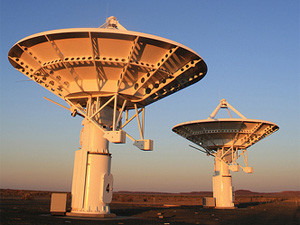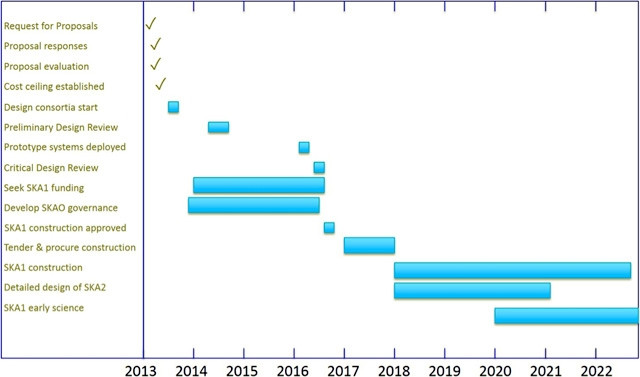
The Square Kilometre Array (SKA) organisation has agreed on a EUR650 million capital expenditure cap for the first phase of the project. This was decided at a board meeting in the UK at the end of July.
The SKA is an international project to build a mega telescope that will be 50 times more sensitive and produce 10 000 times the survey speed of the best current-day telescopes. Its core will be located in SA, with a smaller array sited in Australia.
The telescope array will comprise about 3 000 dish-shaped antennas and other hybrid receiving technologies, with a core of about 2 000 antennas and outlying stations of 30 to 40 antennas each, spiralling out of the core.
MeerKAT, the precursor to the SKA that is set to be incorporated into the SKA phase one, is expected to come online in 2016.
Once completed, the SKA will collect data from deep space, which is expected to date back to the "Big Bang". The aperture arrays and dishes of the SKA are expected to produce 10 times the volume of current global Internet traffic.
Restricting costs
"Following the recommendation of the director-general of the SKA organisation, the SKA board has instructed the SKA office to proceed with the design phase for SKA phase one assuming a capital expenditure cost ceiling for construction of EUR650 million," states the board report.
The board says the evolution of the SKA phase one project to fit within this cost ceiling will be guided both during the design phase and construction by scientific and engineering assessments of the baseline design undertaken by the SKA Office.
SKA SA project director Bernie Fanaroff has reportedly said it is "fairly unusual" for big science projects to be given a cost ceiling, but it was intended to give certainty to both funders and designers. Fanaroff said the challenge will be to design a next-generation telescope able to do all the science while still meeting the cost cap.
The SKA board says its decision to introduce a cost cap is "consistent with the primary objective of building an exciting, next-generation telescope capable of transformational science".
The board also noted the concerns about "potential fragmentation of manpower within consortia" expressed by the evaluation panel tasked with consortia's proposals. The consortia can include groups of research institutions and companies from countries on different continents that offer joint research and development capabilities.
Subsequently, the board approved a proposed negotiation process in which "a schedule of deliverables will be completed for each work package and value assigned to them," says the board.
The board also endorsed a new high-level project timeline for SKA phase one, but the timeline requires approval by the members of the SKA organisation before it can be formally adopted.
The next board meeting will be held in Qatar in October where the draft hosting agreements - details of what SA and Australia both agree to as hosts - are reportedly expected to be presented.

Share